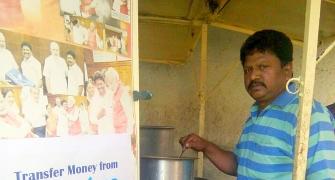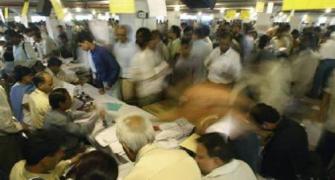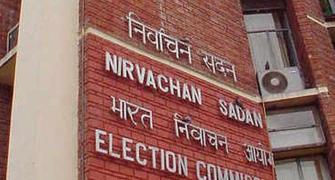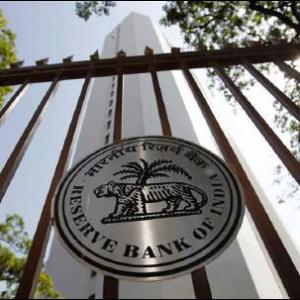The Mysuru press, considered one of the most sophisticated, has been printing the new Rs 2,000 and Rs 500 notes since August, three months before demonetisation rolled out, Alnoor Peermohamed/Business Standard reports, in the last of the 4-part series.
Part 1: When did printing of Rs 2,000 notes actually begin?
Part 2: Why notes ban is good news for people of this MP town
Part 3: India reeling under cash crunch, but this mint can't print Rs 2,000 notes

IMAGE: India is the world’s second-largest importer of paper. Photograph: PTI Photo.
Outside the high walls that guard the currency note press in Mysuru, things look calm and relaxed. Perhaps, the only visible measure of the action inside is the number of trucks trying to gain entry into the fortified premises to drop off their loads of imported paper that is used to make the new Rs 500 and Rs 2,000 notes.
After demonetisation, it’s commonplace to find anything from 20 to 25 container trucks carrying imported paper parked outside the premises, having made a three-hour journey from Bengaluru’s Kempegowda International Airport, an employee told Business Standard.
According to truckers, the frequency of paper shipments has increased considerably over the past three months, indicating a pick-up in the speed of printing currency. India anyway happens to be the world’s second-largest importer of paper.
The unprecedented demand for cash is making the Mysuru press run at record levels. In fact, to ease the burden on the staff, external agencies have been roped in to handle the logistics of getting the newly printed cash from the seven offset machines to several of Reserve Bank of India’s cash reserves. The Mysuru facility, along with Salboni in West Bengal, are run by RBI.
On normal days, the currency is ferried on rail to different parts of the country, but not in these times when thousands of ATMs have downed shutters across the country.
Now, chartered flights and Indian Air Force planes are regularly being used to ship the notes to far-flung cities.
While media reports suggest the army has been roped in for the operation, locals said they hadn’t spotted any army presence in the area.
The ultra-secure facility sits in the same campus as RBI employees’ housing layout, reducing the amount of interaction workers have with the outside world.
Long before Prime Minister Narendra Modi announced the demonetisation move, the press at Mysuru had begun the process of printing new currency.
This has been the case across all other currency presses (Salboni, Dewas and Nashik being the others) as Business Standard found out speaking to people at the spot earlier this week.
At the Mysuru press, workers are putting in an extra day of work every week and production is at its peak. While the exact capacity of the RBI press in Mysuru isn’t known, it, along with, its sister press in Salboni, have the ability to print 16 billion notes a year when running on two shifts.
While the shortage of notes continues in the banking system, the press at Mysuru is operational 24 hours a day for six days a week. Around 600 workers are divided between three shifts, up from two earlier, and the press is now focused on printing just Rs 500 notes as the demand for this denomination has soared.
Insiders pointed out that this press, considered to be one of the most sophisticated ones, has been printing the new Rs 2,000 and Rs 500 notes since August, three months before demonetisation rolled out.










